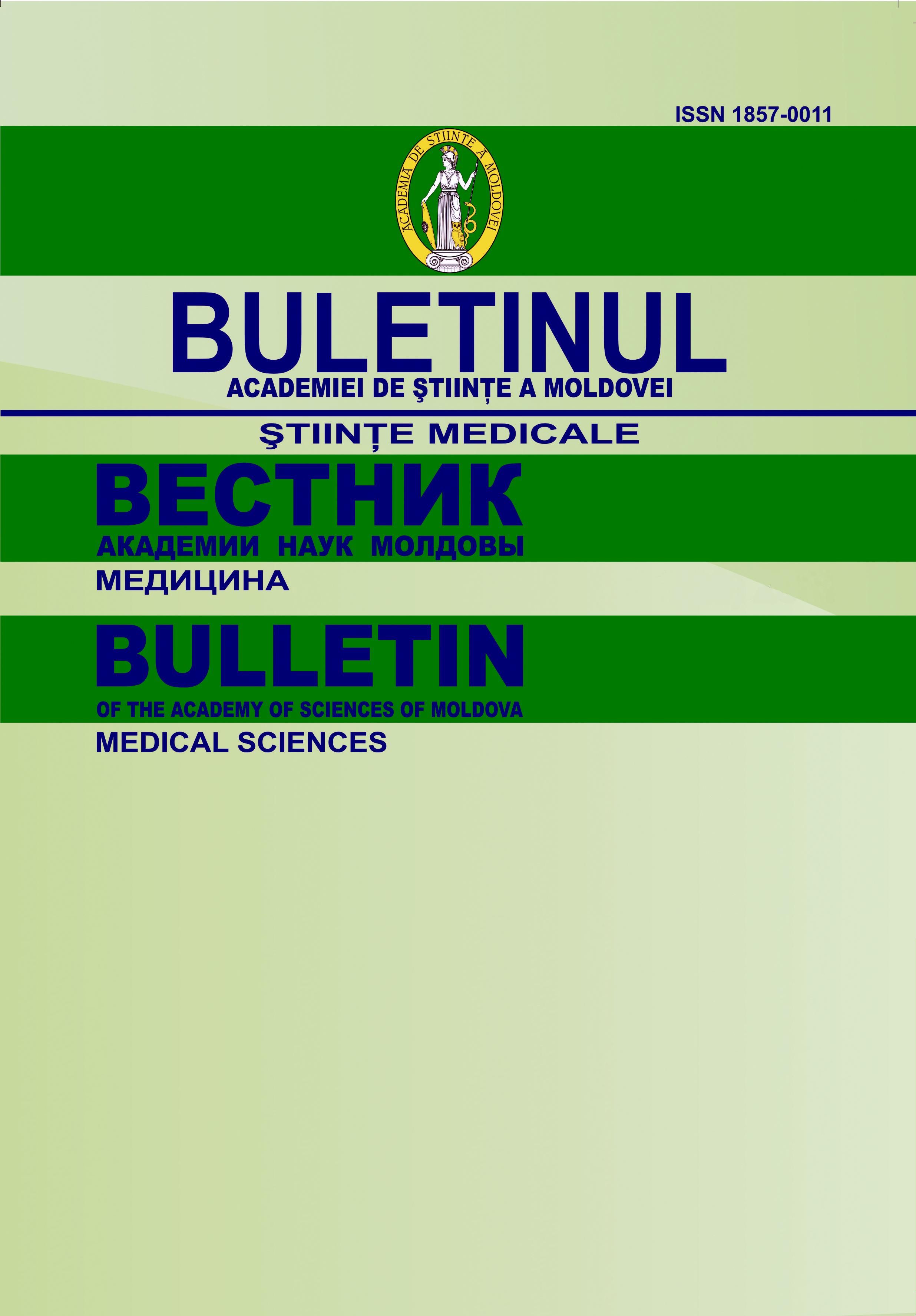Metabolic syndrome and other comorbidities in the structure of COVID-19 mortality in the Republic of Moldova (March-December 2020)
DOI:
https://doi.org/10.52692/1857-0011.2021.2-70.05Keywords:
COVID-19, mortality, comorbidities, malignant tumors, diabetes, cardiovascular diseaseAbstract
Metabolic syndrome and other co-morbidities in the structure of COVID-19 mortality in the Republic of Moldova (March-December 2020) The mortality of the population of the Republic of Moldova through COVID-19 in March-December 2020 made up 2846 (100%) people confirmed with SARS CoV-2 (women –1362/2846 (47,8%), men — 1484/2846 (52,2%). In the urban sector it is 1649/2846 (58,0%), including Chisinau — 1034/2846 (36,3%), Balti — 158/2846 (5,6%), in the rural sector — 1197/2846 (42%). Mortality in the age groups constituted for the age group of 30-70 years (men — 862/2846 (30,3%), women — 805/2846 (28,2%). The share of comorbidity was 1905/2846 (66,9%), the structure of the main diseases being: diseases of the cardiovascular system – 966/1905 (33,9%); diabetes mellitus – 523/1905 (27,5%); malignant tumors – 91/1905 (4,8%). In the age groups — 30-70 years: diseases of the circulatory system – 485/1905 (25.4%), diabetes – 335/1905 (17.6%), cancer – 62/1905 (3.3%)References
Chen Z.-M. et al. Diagnosis and treatment recommendations for pediatric respiratory infection caused by the 2019 novel coronavirus. World journal of pediatrics: WJP 2020.
Handbook of COVID-19 Prevention and Treatment,2020.
Stoermer M.G. Homology Models of the Papain-Like Protease PLpro from Coronavirus 2019-nCoV. 2020.
Wu F. et al. A new coronavirus associated with hu- man respiratory disease in China. Nature 2020.
Zhang H., Saranan K.M. et al. Deep learning based drug screening for novel coronavirus 2019-nCoV. 2020, 19.
Zhou P. et al. A pneumonia outbreak associated with a new coronavirus of probable bat origin. Nature 2020.
Zumla A., Hui D.S. et al. Reducing mortality from 2019-n CoV: host-directed therapies should be an option. The Lancet 2020, 395.
World Health Organization. Novel Coronavirus (2019-nCoV) situation reports. https://www.who.int/emergencies/diseases/novel-coronavirus-2019/situation-reports/ (Accesat 02.03.2021).
https://chemrxiv.org/articles/inhibitors for Novel Coronavirus Protease Indentified by Virtual Screning of 687 Million Compounds/11923239/1.
COVID-19 и метаболический синдром: низкоуглеводное питание против коронавируса. În: https://lchf.ru/30703 (Accesat: 06.09.2020).
Downloads
Published
Issue
Section
License
Copyright (c) 2021 Bulletin of the Academy of Sciences of Moldova. Medical Sciences

This work is licensed under a Creative Commons Attribution 4.0 International License.



